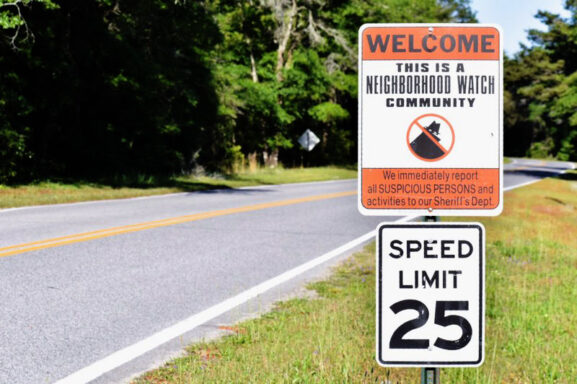Neighborhood Watch
 The Neighborhood Watch program was created to obtain citizen involvement in discouraging and preventing residential crime. Neighborhood Watch is one of the most effective and least expensive ways to prevent crime and reduce fear. Creating a neighborhood watch can help prevent burglaries and robberies and improve relations between police and the communities they serve. The success of the program depends upon a communication network with three partners; the residents, the block captain and the Walton County Sheriff’s Office.
The Neighborhood Watch program was created to obtain citizen involvement in discouraging and preventing residential crime. Neighborhood Watch is one of the most effective and least expensive ways to prevent crime and reduce fear. Creating a neighborhood watch can help prevent burglaries and robberies and improve relations between police and the communities they serve. The success of the program depends upon a communication network with three partners; the residents, the block captain and the Walton County Sheriff’s Office.
How do I start a Neighborhood Watch in my area?
- Begin by asking your neighbors if they would participate in the program.
- Contact the Sheriff’s Office for help in training members in home security and reporting skills, as well as information on local crime patterns.
- Arrange a meeting to be held at a residence, local church or park facility.
- Select a coordinator and block captains who are responsible for organizing meetings and relaying information to members.
- Recruit members, keeping up with any new residents and making special efforts to involve the elderly, working parents and young people.
- Work with local government or Law Enforcement to put up Neighborhood Watch signs, usually after at least 50% of all households are enrolled.
What do we look for?
- Someone screaming or shouting for help.
- Someone looking into windows and parked cars.
- Unusual noises.
- Property being taken out of temporarily vacant homes or closed business.
- Cars, vans or trucks moving slowly with no apparent destination or without lights.
- Anyone being forced into a vehicle.
- A stranger sitting in a car or stopping to talk to a child.
- Abandoned cars.
How do I report suspicious activity?
- Call the dispatch number given to you during the original meeting or call 911.
- Give your name and address.
- Briefly describe the event – what happened, when, where and who was involved.
- Describe the suspect: sex, race, age, height, weight, hair color, clothing, distinctive characteristics such as beard, mustache, scars or accent.
- Describe the vehicle if one was involved: color, make, model, license plate and special features such as stickers, dents or decals.
